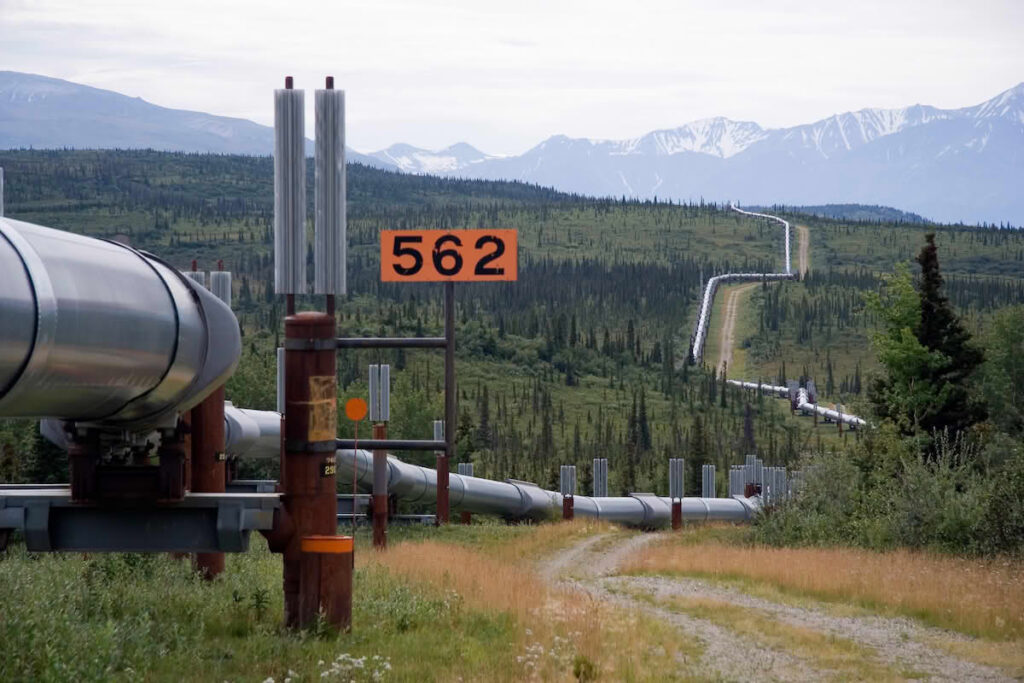PipeSim is a highly sophisticated and versatile software tool used in pipeline engineering, specifically designed for the modeling, simulation, and optimization of oil and gas production systems. Developed by Schlumberger, PipeSim has become an industry-standard application for engineers looking to solve complex flow-related challenges in well, pipeline, and process facilities. By providing an integrated environment for multiphase flow simulation, PipeSim helps users optimize the design and operation of pipeline systems, ensuring safety, reliability, and efficiency. This article delves into the features of PipeSim, its primary applications in pipeline engineering, and the benefits it offers in the oil and gas industry.
1. Overview of PipeSim
PipeSim is a software solution used for the modeling of steady-state, multiphase flow in pipelines, wells, and surface facilities. It is capable of simulating the behavior of single-phase and multiphase fluids (liquid, gas, and solid) under a wide range of flow regimes and conditions. PipeSim can be employed for flow assurance, hydraulic analysis, network modeling, and integrated production system analysis. The software’s powerful calculation engine is based on comprehensive fluid models and empirical correlations that help in accurately predicting flow behavior in various scenarios.
PipeSim is often used to complement other software tools like process simulators and reservoir modeling applications. It is integrated into the wider software ecosystem offered by Schlumberger, including integration with reservoir simulation tools such as Eclipse and Petrel. This integration facilitates comprehensive modeling of the entire production chain, from the reservoir to the point of sale.
2. PipeSim Capabilities and Features
PipeSim offers a wide range of capabilities that make it particularly suitable for pipeline engineering. These include:
2.1 Multiphase Flow Simulation
One of the most important features of PipeSim is its ability to simulate multiphase flow, which involves the simultaneous transport of oil, gas, and water. This capability is crucial in pipeline engineering, as multiphase flow systems are complex and their behavior depends on several factors such as flow rate, temperature, pressure, and pipeline geometry. PipeSim provides accurate predictions of pressure drops, flow regimes, liquid holdup, and other parameters that help engineers make informed decisions during design and operational stages.
2.2 Well and Pipeline Modeling
PipeSim offers robust modeling capabilities for both well and pipeline systems. In pipeline modeling, engineers can design pipelines, analyze flow characteristics, and identify potential issues such as bottlenecks, pressure losses, or thermal effects. PipeSim’s pipeline modeling environment allows engineers to configure the pipeline topology, materials, insulation, and other elements to simulate realistic conditions. The software also provides the capability to account for various equipment components such as pumps, compressors, valves, and separators.
2.3 Flow Assurance
Flow assurance is critical in ensuring the safe and efficient transport of hydrocarbons through pipelines. PipeSim helps to analyze and address various flow assurance challenges such as wax deposition, hydrates, scaling, and slug formation. By predicting the occurrence and severity of these issues, engineers can develop mitigation strategies that help maintain pipeline integrity and optimize production. The ability of PipeSim to perform thermal analysis also helps in identifying areas that may be susceptible to hydrate formation or wax precipitation.
2.4 Network Modeling
PipeSim allows engineers to model and simulate interconnected networks of wells, flowlines, and surface facilities. This network modeling capability is crucial for the optimization of integrated production systems. Engineers can analyze how changes in well performance, production strategy, or network configuration affect the entire system. By modeling complete networks, PipeSim helps engineers maximize production, reduce energy consumption, and ensure optimal operation of the entire production infrastructure.
2.5 Steady-State vs. Transient Analysis
PipeSim is primarily designed for steady-state analysis, where it predicts the flow behavior under constant operating conditions. Steady-state modeling is useful for evaluating and designing systems that operate continuously over long periods. However, the steady-state analysis provided by PipeSim can also be used as a basis for transient simulations, providing valuable insights into dynamic scenarios. Transient analysis is typically required when dealing with short-term events such as start-up or shut-down conditions.
2.6 Integration with Reservoir Models
PipeSim integrates seamlessly with reservoir simulation tools to enable engineers to evaluate the entire production system in a single environment. This integration is beneficial when it comes to well and pipeline optimization, where the interplay between the reservoir, wellbore, and surface facilities can be analyzed. By coupling PipeSim with reservoir models, engineers can simulate the effects of different production strategies on reservoir behavior, optimize production rates, and plan field development.
3. Uses of PipeSim in Pipeline Engineering
PipeSim offers a broad range of applications in pipeline engineering, making it an invaluable tool for various stages of a pipeline’s life cycle. Below are some of the key applications:
3.1 Pipeline Design and Optimization
PipeSim is extensively used during the design phase of pipelines to ensure that they are sized and configured appropriately. Engineers can use PipeSim to evaluate different pipeline diameters, materials, and insulation strategies to minimize pressure losses and optimize fluid transport. The software can also identify the ideal locations for installing equipment such as compressors and pumps to maintain adequate pressure throughout the pipeline system. Optimization algorithms in PipeSim also enable engineers to select design parameters that minimize capital and operational costs while ensuring efficiency.
3.2 Flow Assurance Studies
Flow assurance is an important aspect of pipeline engineering, and PipeSim plays a significant role in predicting and mitigating flow assurance issues. The software is capable of predicting phenomena such as hydrate formation, wax deposition, and scaling, which can negatively impact pipeline performance. By simulating thermal profiles and predicting flow characteristics, PipeSim helps engineers to determine the risk of hydrate formation or wax precipitation and to plan for appropriate mitigation strategies, such as the use of chemical inhibitors, heating systems, or pigging schedules.
3.3 Hydraulic Analysis
Hydraulic analysis is critical to understanding the behavior of fluid flow through pipelines. PipeSim provides engineers with the ability to model pressure losses, evaluate flow regimes, and predict liquid holdup along the pipeline. This information is crucial for determining the capacity of a pipeline, understanding operational limits, and ensuring that fluids are transported efficiently and safely. Hydraulic analysis also provides information on whether additional equipment, such as boosters or separators, is needed to ensure effective fluid transport.
3.4 Pipeline Operation and Troubleshooting
During pipeline operation, PipeSim can be used for troubleshooting problems such as pressure drops, reduced flow rates, or unexpected flow behavior. By simulating the pipeline system, engineers can identify the root cause of these issues and recommend corrective actions. Additionally, PipeSim can be used for operational planning, such as determining the impact of changes in operating conditions (e.g., pressure, temperature, or flow rate) on the entire system.
3.5 Network Analysis for Gathering Systems
Many oil and gas production systems involve gathering networks in which multiple wells are connected to a central processing facility. PipeSim is an effective tool for analyzing these gathering networks, determining the effects of changing well performance, and identifying optimal flow paths. Network analysis using PipeSim allows engineers to evaluate production scenarios, assess the impact of adding new wells, and optimize the distribution of production flows across the entire network.
3.6 Integrated Production System Modeling
By integrating with reservoir models, PipeSim can be used for integrated production system modeling, where the performance of the entire production system—including the reservoir, wellbore, and surface facilities—is simulated in a single environment. This approach enables engineers to make informed decisions regarding production optimization, well management, and surface facility configuration, leading to maximized hydrocarbon recovery and reduced operational costs.
4. Benefits of Using PipeSim in Pipeline Engineering
The use of PipeSim in pipeline engineering offers several significant benefits:
- Improved Accuracy: PipeSim is built on a comprehensive set of fluid models, empirical correlations, and experimental data that provide accurate predictions of multiphase flow behavior. Accurate modeling leads to better design decisions and improved system performance.
- Enhanced Safety: By predicting flow assurance issues, such as hydrates and wax deposition, PipeSim helps ensure the safe and reliable operation of pipelines. This predictive capability allows for proactive measures, reducing the risk of unplanned shutdowns and safety incidents.
- Cost Savings: PipeSim enables engineers to optimize pipeline designs, reduce pressure drops, and minimize the need for additional equipment. These optimizations lead to significant cost savings, both in terms of capital expenditure and operational costs.
- Optimized Production: By modeling the entire production system, including wells, pipelines, and surface facilities, PipeSim helps to maximize production rates, enhance recovery, and ensure efficient resource utilization.
- Efficient Troubleshooting: The ability to model existing pipelines and predict the effects of operational changes makes PipeSim a valuable tool for diagnosing problems and optimizing performance during pipeline operations.
PipeSim is a powerful and versatile tool in pipeline engineering, providing capabilities for the modeling, simulation, and optimization of oil and gas production systems. With features ranging from multiphase flow simulation to network modeling and flow assurance analysis, PipeSim serves as a comprehensive solution for pipeline engineers. It ensures optimal design, enhances safety, and reduces costs in pipeline systems, contributing to the overall efficiency and sustainability of oil and gas production. Whether designing new pipelines, troubleshooting operational issues, or optimizing production networks, PipeSim stands out as an essential asset in the toolkit of pipeline engineers.





